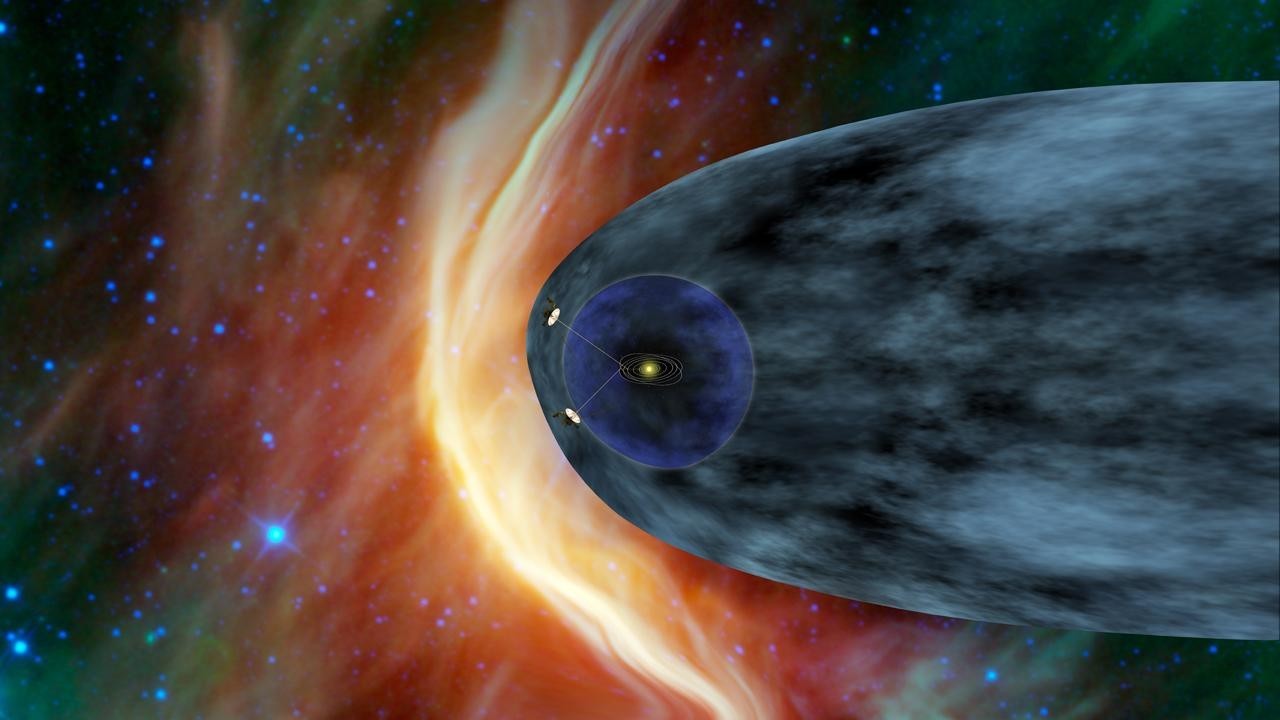
More than a week after accidentally cutting off communications with the Voyager 2 probe, NASA officials heard a hopeful signal that may allow them to reestablish contact with the interstellar traveler months ahead of schedule.
On Aug. 1, NASA's Jet Propulsion Laboratory (JPL) Twitter account confirmed that engineers had received a transmission called a carrier signal from Voyager 2 — which is currently cruising beyond the edge of the solar system more than 12.3 billion miles (19.9 billion kilometers) from Earth.
"A bit like hearing the spacecraft's 'heartbeat,' it confirms the spacecraft is still broadcasting, which engineers expected," JPL officials tweeted.
This "heartbeat" signal indicated that Voyager 2 is still functioning even after a series of planned operations on July 21 accidentally angled the probe's antenna about two degrees away from Earth, all but cutting off communications between Voyager and NASA's Deep Space Network — the international array of radio antennas that support NASA's interplanetary missions.
Related: Voyager 1 sends strange signals from beyond the solar system. Scientists are confused.
With the "heartbeat" confirmed, NASA will next try and send a command back to Voyager 2 to coax the probe into angling its antenna back toward Earth. Typically, it takes about 18.5 hours for a command to reach Voyager 2, and another 18.5 hours for Earth to receive a transmission back from the probe, according to Scientific American, so we may know its fate in the next two days.
If the forced realignment fails, Voyager 2 is expected to reset its antenna to the Earth-facing position on Oct. 15, in one of a planned series of auto-resets that occur throughout the year.
Voyager 2 and its twin Voyager 1 were launched into space in August and September 1977, respectively, 16 days apart from one another. Both probes shot past the outer solar system planets before venturing onward toward the edge of the heliosphere — the outermost layer of the sun's atmosphere, which separates our solar system from interstellar space.
Voyager 1 cracked the heliosphere first, reaching interstellar space in August 2012. It is currently cruising about 14.8 billion miles (23.8 billion km) from our planet, making it the single most distant human made object from Earth ever created. Voyager 2 followed in its twin's thruster-steps several years later, leaving the heliosphere in November 2018.
Both probes currently have enough power and fuel to last until at least 2025, according to NASA. Following this, they will become two of the most expensive record players of all time; both probes carry copies of the famous Voyager Golden Record — a double-sided collection of songs and sounds meant to encapsulate the natural and musical heritage of Earth for any audiophile aliens who happen upon them. Both probes also contain a music player with pictorial instructions, and a map of Earth's location relative to a handful of ultrabright quasars, for aliens eager to hear what sounds we Earthlings have cooked up since the 1970s.







